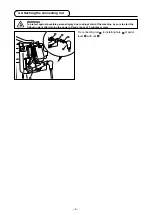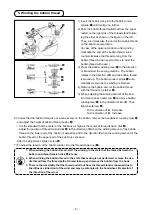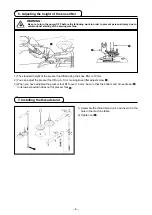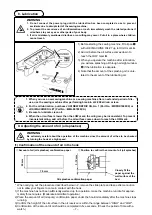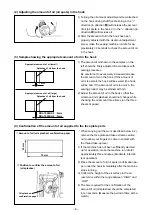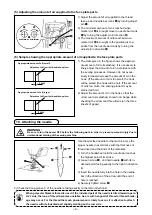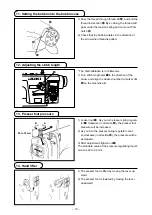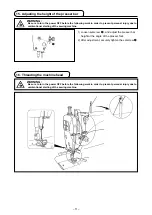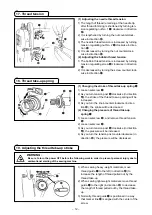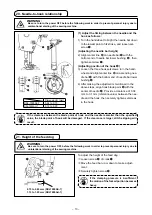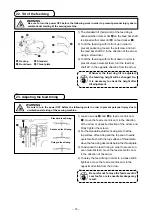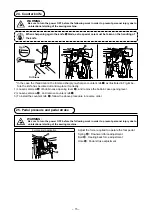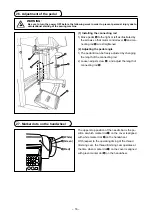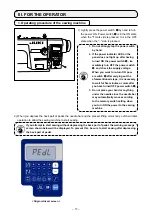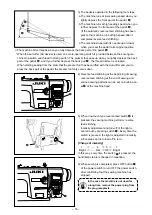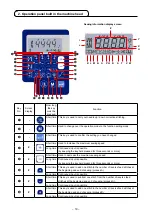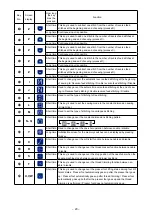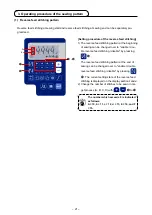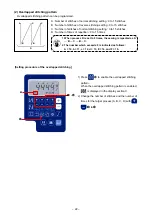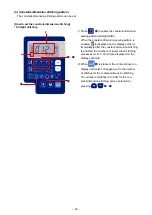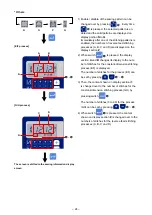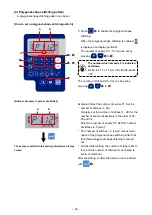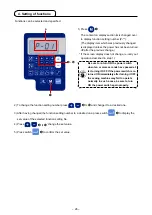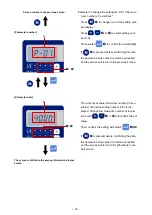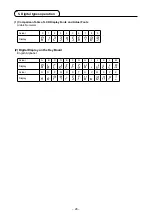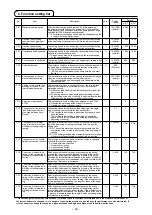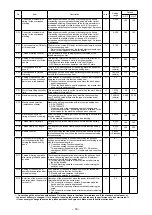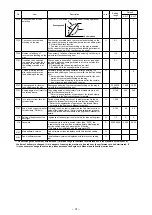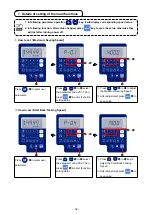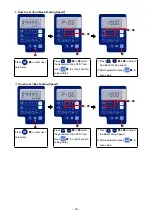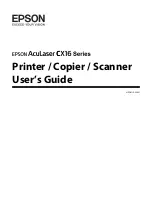
4) Reverse feed stitching at the beginning of sewing,
reverse feed stitching at the end of sewing and
various sewing patterns can be set on built-in pan-
el
❺
of the machine head.
6) When sewing is completed, press OFF button
❶
of the power switch to turn OFF the power switch
after confirming that the sewing machine has
stopped.
In the case the machine is not used for
a long time, remove the power plug from
the plug receptacle.
5) When one-touch type reverse feed switch
❻
is
pressed, the sewing machine performs reverse
feed stitching.
Intensity adjustment and turn-off of the light is
carried out by pressing switch
❼
. Every time the
switch is pressed, the light is adjusted in intensity
in five steps and is turned off in turn.
[Change of intensity]
1
⇒
...... 4
⇒
5
⇒
1
Bright
⇒
...... Dim
⇒
Off
⇒
Bright
In this way, every time the switch
❼
is pressed, the
hand lamp status is changed in repetition.
3) The pedal is operated in the following four steps:
a. The machine runs at low sewing speed when you
lightly depress the front part of the pedal.
❷
b. The machine runs at high sewing speed when you
further depress the front part of the pedal.
❷
(If the automatic reverse feed stitching has been
preset, the machine runs at high speed after it
completes reverse feed stitching.)
c. The machine stops (with its needle up or down)
when you reset the pedal to its original position.
d. The machine trims threads when you fully depress the back part of the pedal.
❹
* When the auto-lifer (AK device) is used, one more operating switch is provided between the sewing ma-
chine stop switch and thread trimming switch. The presser foot goes up when you lightly depress the back
part of the pedal
❸
, and if you further depress the back part
❹
, the thread trimmer is actuated.
When starting sewing from the state that the presser foot has been lifted with the Auto-lifter and you de-
press the back part of the pedal, the presser foot only comes down.
❺
❼
❻
❶
❸
❷
❹
– 18 –

